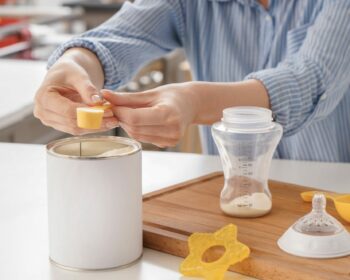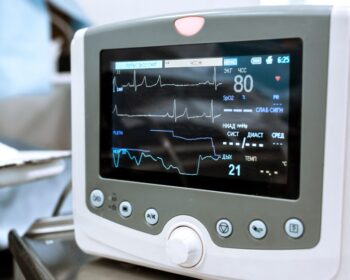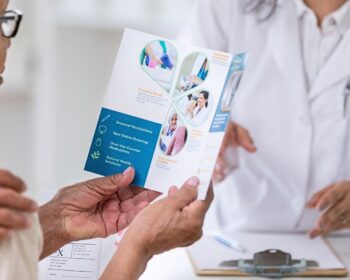In the future, nutrition could be found in the air, as demonstrated by a Finnish innovation by Solar Foods. When searching for new sources of protein, many operators are now looking at utilizing the by-products from agriculture, fisheries, and the food industry.
The Finnish food-tech start-up Solar Foods has applied for a novel food authorization from the European Food Safety Authority (EFSA). In the best-case scenario, the company may be granted a novel food approval for its single-cell protein Solein by the end of 2023.

The Solar Foods innovation has also convinced financiers: the company has so far received 66 million euros of investments. With the funding, Solar Foods is now building a demo factory in Vantaa in Finland.
The good news was shared by Juha-Pekka Pitkänen, the founder and Chief Technology Officer of Solar Foods, at a seminar on the possibilities and bottlenecks of new proteins at the ChemBio Finland 2022 event.
The ingredients for the single-cell protein produced by Solar Foods come from the air. In the bioprocess developed by the company, microbes are fed carbon dioxide, nitrogen and oxygen caught from the air plus a small amount of nutrients.
The electricity needed for the production comes from renewable energy, solar power or wind power, depending on the location of the plant.
The protein factory can be placed anywhere in the world. No fields are needed for the production, and valuable land saved this way could for example be afforested to operate as a carbon sink.
The Solar Foods protein powder is nutritionally very versatile and contains all the necessary amino acids.
In addition, Solein contains fibers, fatty acids, minerals and vitamins and is a particularly good source of vitamin B12 found in iron. The powder also contains betacarotene, which gives it its yellow color.
The protein powder has a mild umami-like taste, and it can be used instead of soy or pea protein in meat and milk replacement products. It can also be used in pasta and other bakery or cereal products, snacks and different beverages.
Getting all out of fish
The objective of the Blue Products programme run by the Natural Resources Institute Finland (LUKE), funded by the EU, is to increase the value of domestic fish in Finland by developing new added-value products from the by-products of the fishing industry, such as cut-offs and fillet waste.
“Fish waste contains valuable nutrients, which are unfortunately usually left unused or used as animal feed,” says Jaako Hiidenhovi, Senior Scientist at LUKE.
Special focus areas in the study were Baltic herring, Baltic sprat and cyprinids as well as they by-products of fish culture. The substances they include can also be used in dietary supplements and cosmetics, in addition to food.
Different processes for manufacturing new products from fish waste have been developed in the LUKE program. With the help of enzymatic hydrolysis and fractioning, fish press cake can be turned into fish protein hydrolysates and fish bones into minerals. One of these products is fish oil.
Gelatine/collagen hydrolysate for different purposes of use is made with pressurized hot water extraction and fractioning. It is suitable for changing the texture of foods and to be added to food supplement powders, protein bars and drinks, and it can be used for example in biodegradable films and cosmetic products, such as skin lotions.
The challenge with fish protein products is that they smell and taste strong. However, by selecting specific enzymes, protein hydrolysate with umami taste has been successfully created. The smell and taste of Baltic herring have also been altered with microbe processing.
According to laboratory and animal model studies, fish hydrolysates also have many health effects. The next step is to recognize active peptides and prove their effects in clinical studies. The aim is to be able to utilize fish hydrolysates in healthy foods and food supplements.
Safety first
Mari Lyyra, Head of Operations at the Food & Feed and Cosmetics unit at Medfiles, speaks of the safety of the new proteins and the related legislation.
Lyyra has worked as an expert on food legislation for over 20 years and has extensive expertise in the registration and labeling of food products.
According to Lyrra, the most significant safety aspect with regular protein ingredients is the correct labelling of allergens on the package and how carefully consumers read these labeling texts.
For the new sources of proteins, the key legislative framework is the Novel Food Regulation of the European Union.
“Regulatory positioning of proteins under the food legislation is always the responsibility of the food business operator,” Lyyra says.
The key question in applying the Novel Food Regulation is whether the new protein has been used to a significant degree in the EU area before 15 May 1997.
If the protein has not been used for human consumption in the EU before that date, it is very likely that it will be considered a novel food. In that case, a pre-market authorization must be applied for from the European Commission, as Solar Foods has done for its product.
It is not always easy to determine whether a new protein is a traditional or novel food. For example, mung bean protein isolate has been classified as a novel food, even though the bean itself is considered a traditional food.
Finally, it is possible to apply a so-called official consultation request process, in which one EU Member State, with the help of the Commission and the other Member States, evaluates and classifies the regulatory position of the protein, based on the documentation submitted by the applicant.
The consultation process has been used to determine, for example, that rice protein as well as pea and soy protein hydrolysates are traditional foods, while rapeseed protein as well as coagulated potato proteins and their hydrolysates have been granted novel food status.
At the moment, several proteins are in the application process, such as beet leaf protein from Beta vulgaris.
“Medfiles helps businesses in all assessment and application processes related to novel foods,” Lyyra says.
Quality differences
Anne-Maria Pajari, Associate Professor at the University of Helsinki, reminded in the seminar that not all proteins have the same nutritional value.
Animal proteins, such as meat, milk and egg proteins, contain all the necessary fatty acids in an optimal composition, but the only plant-based product with a complete protein composition is soy.
For example, lysine in cereal products and sulphurous amino acids in legumes are so-called limiting amino acids, which means that they are present in low amounts in these food products.
Another factor in protein quality is how well the body can use the proteins.
Bioavailability means the digestibility of the protein in the small intestine and the use of amino acids in metabolic processes, such as the protein synthesis in the body.
Plant-based proteins are generally thought to be less bioavailable than animal proteins, due to the protease inhibitors, lectins, tannins, phytates and glucosinolates they contain.
However, according to Pajari, only very little is currently known of the matter, and the bioavailability of plant and insect proteins is still virtually unknown.
Author: Mari Eskola. The author has a Ph.D. in food science and works as senior regulatory affairs expert at the Food & Feed and Cosmetics team at Medfiles Ltd. She has nearly 25 years of international experience in food safety.
This article was published in Finnish in Kemia 6/2022.
Picture Courtesy of Solar Foods: The Solar Foods protein powder can be used as an ingredient in many kinds of products. The sun yellow color comes from betacarotene.


